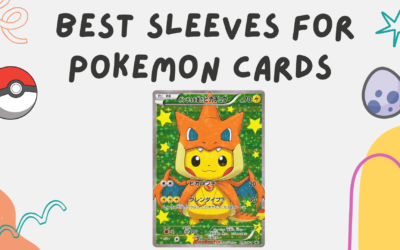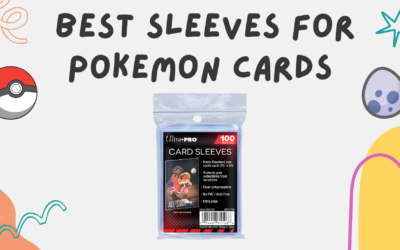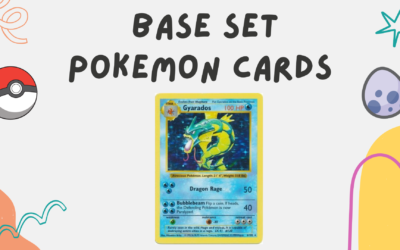The 10 Most Valuable Misprinted Pokemon Cards
Opening a Pokemon TCG pack is always an exciting moment. You never know if you’ll get your favorite or valuable chase card until you’ve opened the pack. And as you pull the cards out and eagerly go through each one, you notice that one or more of them has a defect. What now?
Here’s some good news: misprinted Pokemon cards are quite valuable! Depending on the error, it can turn an inexpensive common card into something worth hundreds of dollars. Not bad, huh?
So before you discard that misprinted card, read on to find out how your misprint can turn into something valuable. We’ll even tell you 10 of the most valuable misprinted Pokemon cards to help you decide whether to keep or sell your misprint.
What is a misprinted Pokemon card?
A misprinted Pokemon card is any card that doesn’t look normal. It can be as minor as a missing icon on the card or as significant as a misspelling in the text. Quality checks are meant to catch these cards to remove them from circulation, but a few slip through the cracks. As a result, misprints are incredibly rare.
The name is also a misnomer because a “misprinted” card doesn’t necessarily mean an error on the card text or art. It’s more of a blanket term to describe any error card, including a misalignment or a miscut.
What kind of misprints are there?
Several kinds of error, or misprint, cards exist in the market, so let’s look at each in detail. We’ve condensed some of the mistakes into one main category because their errors are quite similar, despite their origins.
Error in text
Text errors are one of the “true” misprint errors you could find on a Pokemon card. These errors can be as simple as having an unnecessary period in a word, just like on the Base Set Beedrill card. On its description for the Poison Sting attack, the word “Defending” was printed with a period between the “D” and the “e,” resulting in a description that reads “D.efending.”
And then, there are text errors that result from the Japanese to English adaptation of the cards. The best example is the 1st Edition and Shadowless Base Set Voltorb card, where the description uses the term “Monster Ball” instead of “Poké Ball.”
Of course, many other text errors exist, so the best way to spot one is to examine the card carefully. Even the most minor mistake is enough to pique someone’s interest.
Miscuts
Miscuts are one of the most apparent Pokemon card errors, mainly because of their appearance. Immediately, you’ll notice something’s wrong when you see the card looks different than usual.
Miscut Pokemon cards can be as simple as having the wrong corner; for example, one or all corners of the card is squared instead of their usual rounded shape. Some cards may also have an unnatural shape – neither square nor rounded – on one or more corners.
On the extreme end, you’ll find a card so misshapen it’s not even the whole card anymore. It could be a portion of a card while retaining its typical features or a bizarre cut that should’ve been discarded.
Regardless of which miscut you have, make sure you keep it safe and never throw them away! They may be of little value to your collection, but some collectors deliberately search for these and are willing to pay a handsome amount to acquire them.
Misalignments
Misalignment is another “true” misprint error in Pokemon cards. But determining whether you have an actual misalignment or just a badly-centered card can be tricky.
Some misaligned cards are obvious when you look at them, especially when the image is tilted towards one side. If you’re lucky, you’ll even find a card with two different parts – the top part of one card and the bottom of another. If you have one of these cards, there’s no doubt it’s a misalignment error.
However, there’s a misalignment error that isn’t as obvious as the other two mentioned. At first glance, it just looks like the card is terribly off-centered – that is, the card’s entire graphical content sits way too close to the edge instead of being balanced in the middle. You’ll notice that one or more of the yellow borders (or gray for the Scarlet/Violet set) are thicker than usual.
In this case, you need to find what’s called an “alignment dot.” Look for a black ink dot on one of the corners; be careful because it can look like a random speck of dirt unless you check. If you find it, you have a bona fide misaligned card that grading companies recognize. But if you don’t have one, your card likely has bad centering and nothing more.
Wrong back
Looking at the back of the card is the last thing on our minds when opening a pack or going through our collection, but you shouldn’t ignore it completely. A misprint could happen there too, and you’ll easily miss it if you don’t check.
The most common error on the back of the card is the Inverted Pokeball error. When printed normally, the back should contain the word “Pokemon” twice – one written right side up and the other upside down. Between these texts is a Pokeball that’s cracked open, with a wind effect on its background. The Pokeball should be red on its upper half and white at the bottom.
When the card is right side up when viewed from the front, you should the Pokeball should have the red half on the top. And when the white half is on the top, the other side is typically upside down.
But in some cases, the card’s back is printed upside down – that is, the white half of the Pokeball is at the top when the front of the card is correct. This error is easily missed, especially when the card in question is a chase card and most of the interest is on the front of the card itself.
Holo bleed/holo shift
Holo bleeds and holo shifts are printing errors you’ll find on cards with a holographic layer, including full-art cards. Though they differ slightly in appearance, the cause of this error is similar.
Holo bleed errors happen when the foil layer of the card is too thick and is seen through the paper layer that’s supposed to obscure it. You’ll find this error exclusively on regular holo cards, where only the card art has a holographic background and the rest should be regularly textured. You’ll see the holo pattern beyond the card art frame if you have a holo bleed.
Holo shift, on the other hand, is exclusive to newer cards that are textured. These are usually considered “full arts” – cards with artwork extending throughout the card. When you have a holo shift error, it may look like the card is blurry or in layers. That’s because the foil layer has “shifted” or moved during printing, creating a misaligned image that looks strange.
Stains/Printer Hickeys
Do you have a card with a stain that isn’t supposed to be there, and you’re worried that this blemish will bring down the card’s value? Don’t worry – you have a card with a printer hickey error.
Factory-stained cards, or printer hickeys, occur when the printhead encounters an error or is dirty. It could be that the printhead experienced a momentary release of too much ink, or a small piece of dirt has burned into the card along with the ink. Regardless of the cause, this leaves a stain on the card’s surface.
Printer hickey errors typically must be authenticated by a reputable third party because of possible fakes. People could always use a pen or a marker to create a “stain” and sell it. Third-party authenticators, such as grading companies, can look at the card’s surface using a powerful magnifier to determine whether the ink stain is above all the card’s layers (artificial stain) or underneath a layer (factory-printed stain).
Stains can be as minor as an extra dot somewhere on the card (not to be confused with a text error or alignment dot) or large enough to obscure parts of the card.
Are shadowless cards a misprint?
Although they may seem like one, shadowless cards are not actually a misprint. Misprints are unintended mistakes caused by a slip in quality control or other mechanical error. Shadowless cards do not fall into this category.
That’s because non-first edition shadowless cards were meant to be the halfway point between first edition cards and unlimited print. At the time, Wizards of the Coast were trying to determine the best way to differentiate first edition from unlimited. They trialed with shadowless cards before ultimately deciding to add a drop shadow on the art frame of unlimited cards.
Are misprints rare valuable?
Misprints are indeed rare and valuable, but not in the same way as a regular chase or grail card.
A misprint’s rarity relies on the fact that it’s a mistake and how quickly it was corrected. Having a text error alone isn’t enough to drive its price; it must also be updated immediately. Otherwise, it becomes a common novelty, or worse, more common than the corrected version.
A classic example of a common, uncorrected mistake is the Dark Arbok card from the Team Rocket set. Both the holographic and non-holographic versions of the card have “23000” instead of “2000” on their copyright date. This was never corrected, so this misprint is a common one that doesn’t add any value.
10 Expensive Misprint Cards
Curious about some of the misprint card values in the market? Don’t worry – we’ve compiled some of them for you. Remember that the misprint collector’s market is quite a niche market, and some sales happen privately instead of on marketplaces, so this list serves as a rough guide.
Base Set Diglett 47/102 Rotated Energy Misprint
This error is easy to miss, but looking closely at a Diglett card with this error will reveal that the Fighting energy symbol for Dig is rotated 90 degrees to the left. As a result, the energy symbol has the fist pointing to the left instead of upwards.
Diglett cards with this error sell for $200, while a regular one only sells for a fifth of its price at $40.
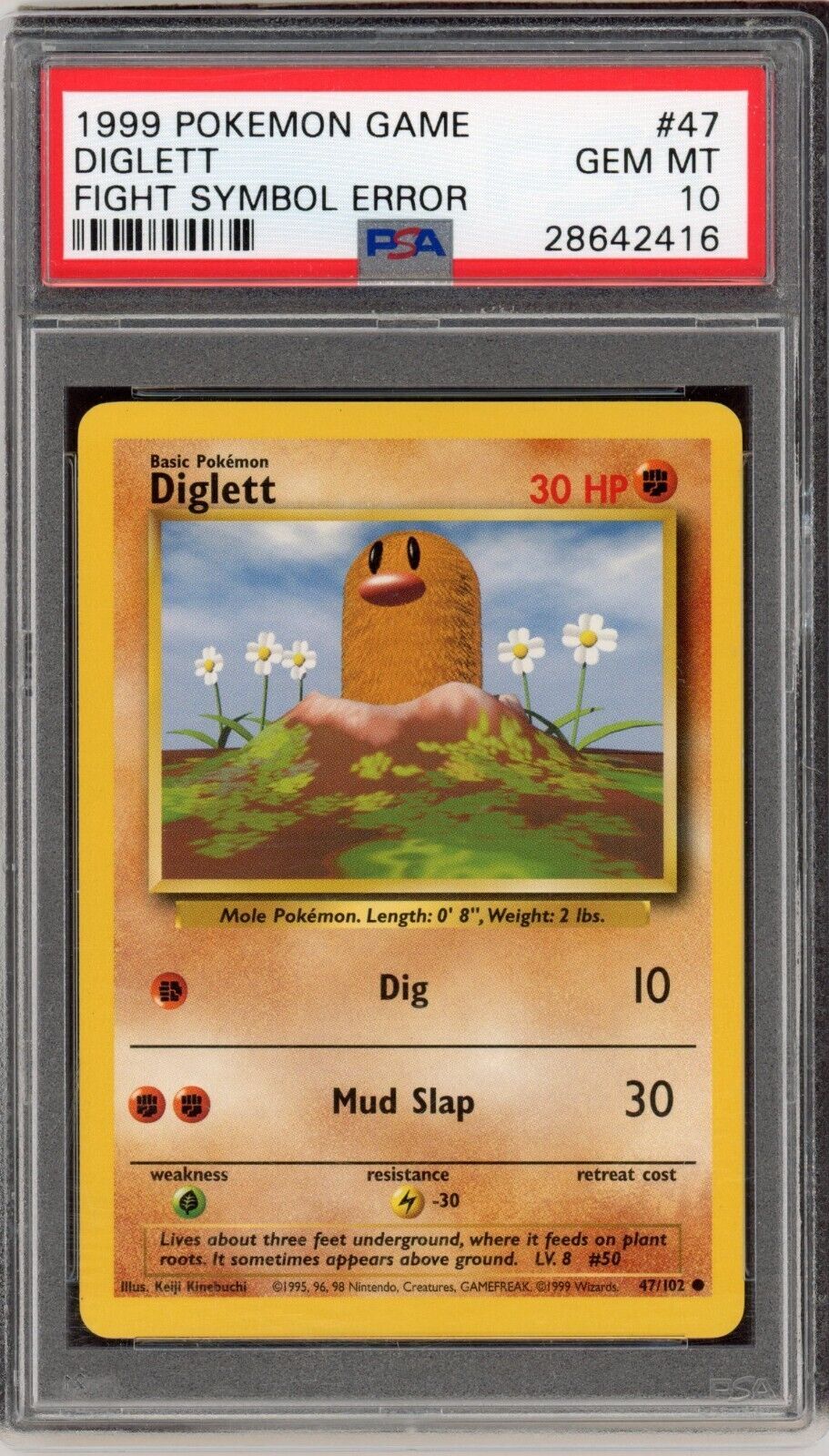
Base Set Diglett 47/102 Rotated Energy Misprint
VMAX Climax Charizard 017/184 Incorrect Holo Misprint (Japanese)
Even modern Japanese cards aren’t immune to errors, and this Charizard card from the VMAX Climax set is no exception.
A non-error Charizard card should have a holographic background with vertical lines appearing with light, giving it more of a textured look. However, this error card has the wrong holo foil texture – it’s completely smooth.
Incorrect Holo Charizards sell for $300, nearly ten times more than their regular counterpart at $33.
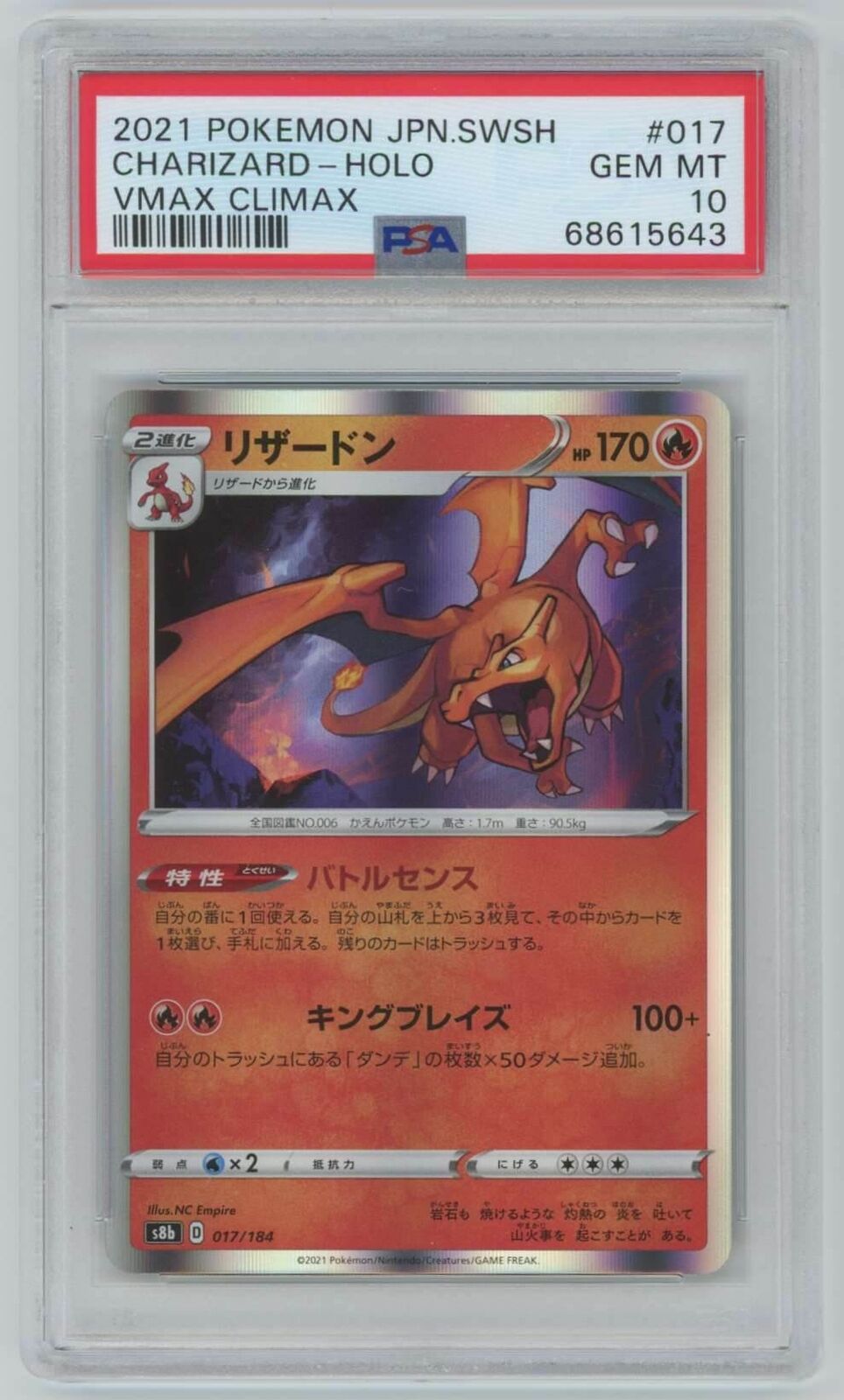
VMAX Climax Charizard 017/184 Incorrect Holo Misprint (Japanese)
Fossil Set Krabby 51/62 Claw Slash Misprint
Under normal circumstances, the Krabby card in the Fossil set is just another ordinary common card. The most expensive one sells for an average of $27, which is affordable for starting collectors. But the price changes if the same card bears the “Claw Slash” error.
“Claw Slash” is the term used to describe a misprint where a white slash is on top of the claw symbol for the Fossil Set. It’s likely that an obstruction on the print head caused this “slash” effect.
Krabby cards with this error sell for up to $300 – over ten times the price of the most expensive non-error card.

Fossil Set Krabby 51/62 Claw Slash Misprint
Base Set Wartortle 42/102 Evolution Box Misprint
The Squirtle line is prone to errors, with its evolution cards being the subject of mistakes. This time, the unlimited print of the Wartortle card contained a design error on the evolution box; instead of showing Squirtle there, an image of Wartortle was printed.
This evolution box error card sells for about $400; for comparison, the most expensive non-error Wartortle card is $62.

Base Set Wartortle 42/102 Evolution Box Misprint
Jungle Set Butterfree 33/64 “d” Edition Misprint
Jungle Set is one of the sets that still had a “1st edition” run, which makes this Butterfree error interesting. Instead of “1” appearing on the edition stamp, it looks as if there’s a “d” on there instead. That’s caused by an ink blot during the printing process.
Butterfree “d” edition cards sell for about $400, which is twice as much as their non-error counterpart.
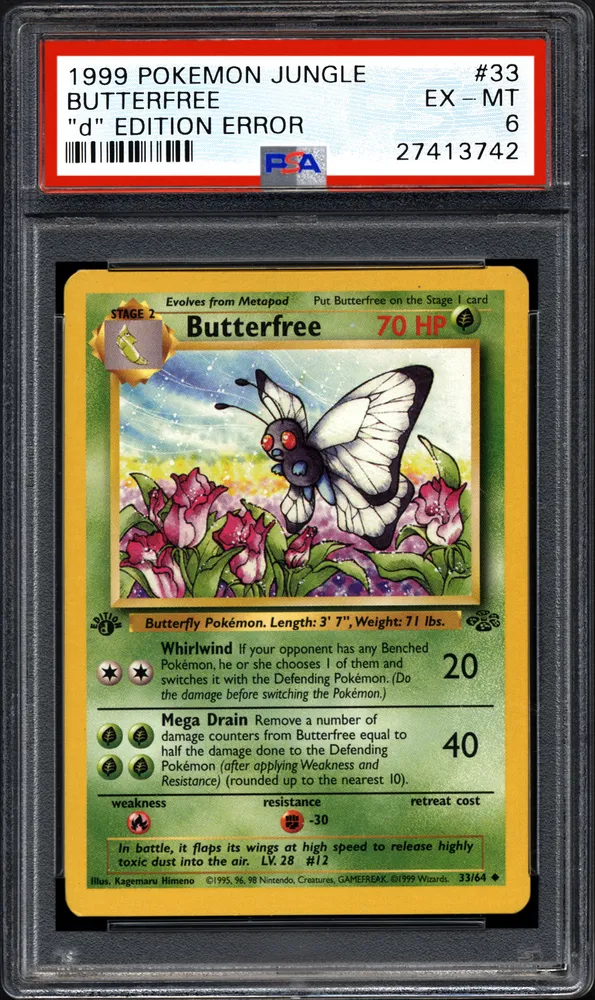
Jungle Set Butterfree 33/64 “d” Edition Misprint
Base Set Blastoise 2/102 Stage Misprint
Everyone knows that the Blastoise card from the Base Set is popular, but what if you add an error on the card as well? That’s exactly what happened when someone sold their Blastoise card with a “Stage Error.” A printing error prevented the word “Stage” from appearing correctly on the top right corner of the card.
At the time of writing, only a Beckett 9 has been sold in the market for $999, which is already over twice as much as a non-error Blastoise of the same grade. Imagine how much higher the price would have been if a PSA 10 version of this error card existed.
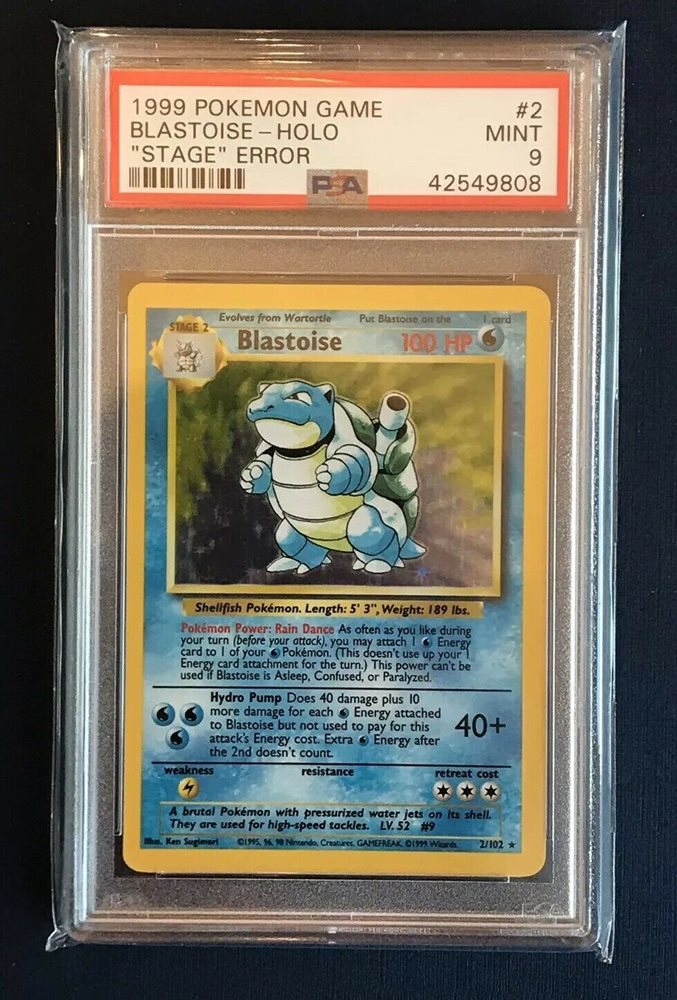
Base Set Blastoise 2/102 Stage Misprint
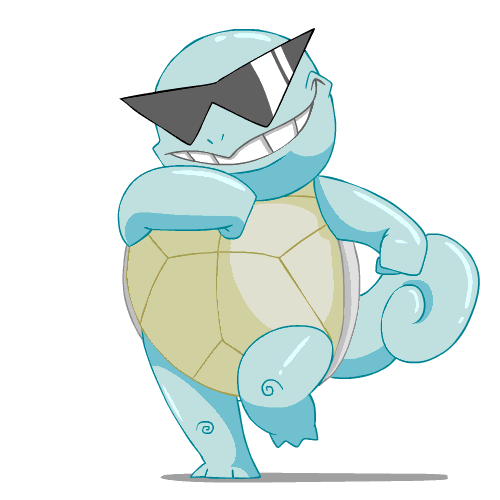
Need To Sell Your Pokemon Cards Fast?
We’ll Take Them Off Your Hands!
Pokemon Pop Series 5 Mew Holo #3 Upside-Down Back Misprint
Upside-down errors are interesting for collectors because it requires them to feature the card’s back instead of the front, and this Pop Series 5 Mew #3 card is no exception. This card’s most expensive non-error version sold at just over $1,000, while one with an upside-down back error went for $910 last year.
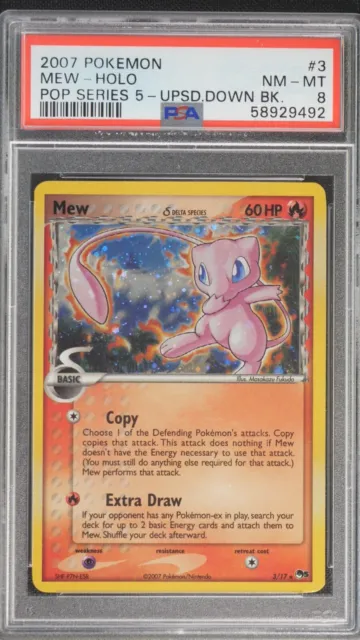
Pokemon Pop Series 5 Mew Holo #3 Upside-Down Back Misprint
Ancient Mew “Nintedo” Promo Card Misprint (Japanese)
Those who went to see Pokemon the Movie 2000 in cinemas during its first week of release received a sealed Ancient Mew promo card. This promotion was active worldwide, and guests received a promo card based on that country’s language.
For cinema-goers in Japan, they received a Japanese version of the card, but with a text error. Instead of the copyright text saying “Nintendo,” it’s missing the third -n. As a result, the first print of the Japanese promo cards says “Nintedo” at the bottom.
This error was subsequently corrected, along with a change on its holofoil surface. The lucky ones who received the error card can sell theirs today for $1,200. Compare that to the corrected version, which only sells for over $400.
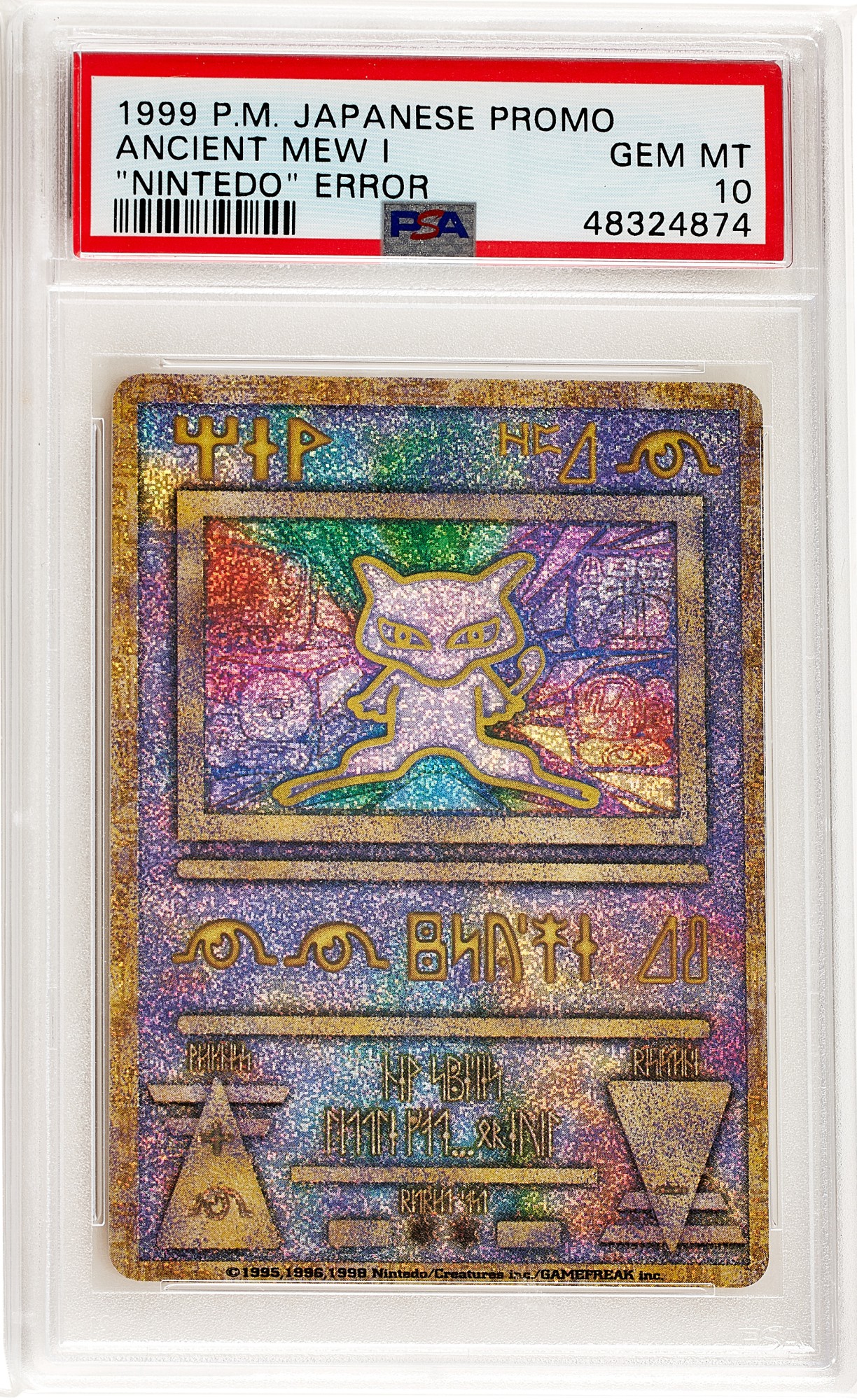
Ancient Mew “Nintedo” Promo Card Misprint (Japanese)
Base Set Booster Pack Triangle Misprint
Though technically not a card, this Base Set Booster Pack error contains a fascinating story.
When Wizards of the Coast started distributing unlimited cards, the earlier packs still had the 1st Edition stamp on them. Instead of discarding the already-made packs, they put a black triangle to obscure the 1st edition stamp on the pack itself, then proceeded to put the unlimited cards inside as intended.
Nowadays, an unopened pack with the triangle error sells for over $2,500. That’s a far cry from the $1,000 average price of a regular unlimited booster pack.
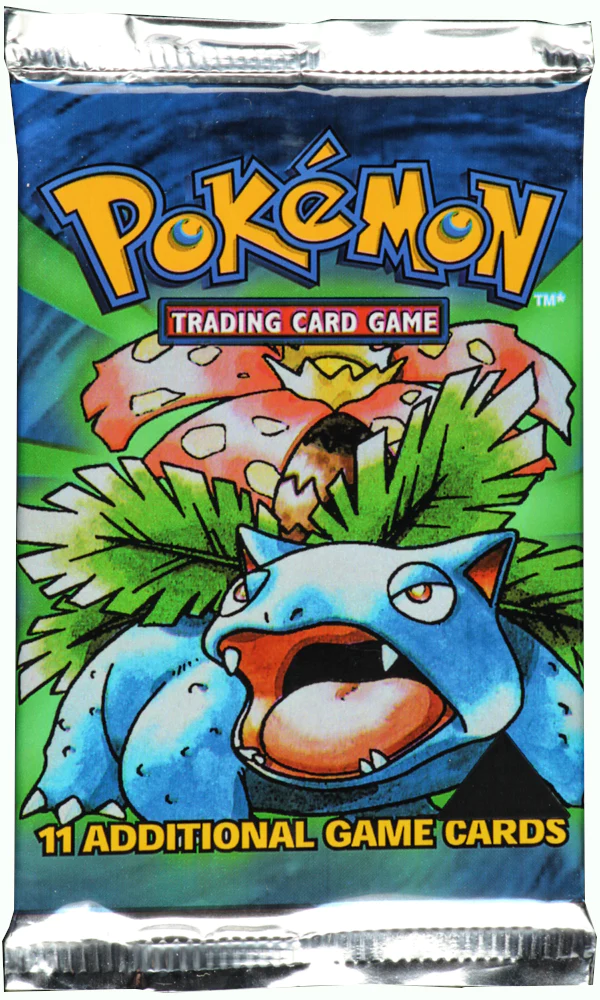
Base Set Booster Pack Triangle Misprint
Team Rocket Dark Dragonite 5/82 1st Edition Misprint
During the 1st edition print of the Team Rocket set, Dark Dragonite 5/82 was mistakenly printed as a non-holo when it was supposed to be holographic. That’s because the first 17 cards of the set are all holographic; afterwards, they’re repeated in order but as a non-holo. As a result, Dark Dragonite 5/82 and 22/82 were both non-holo for a while.
This error card sells for over $3,200 in the market – a considerable amount for a card with the wrong texture. A proper 1st Edition Dark Dragonite 5/82 sells for a little over $2,300.
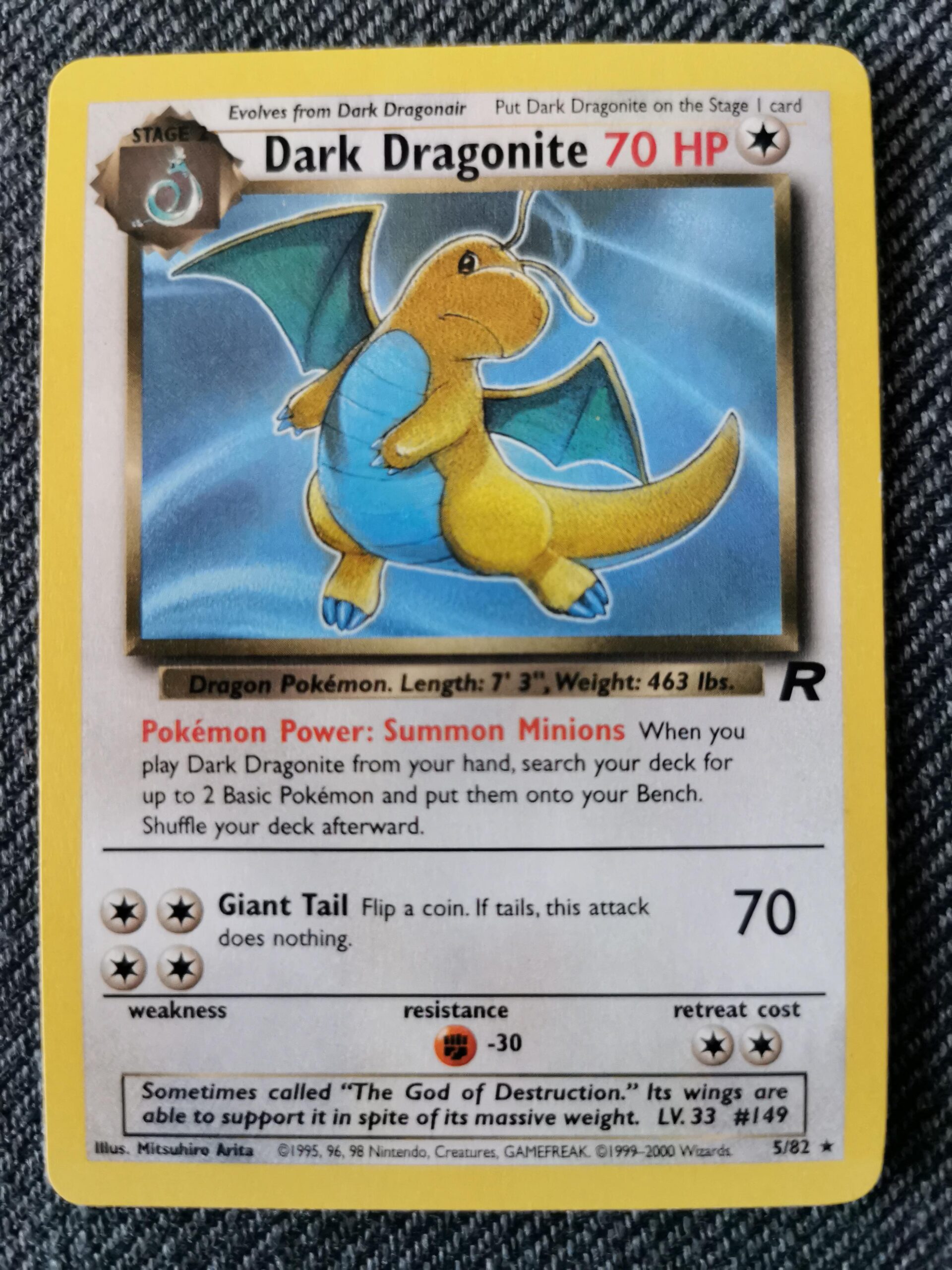
Team Rocket Dark Dragonite 5/82 1st Edition Misprint
Sell Your Pokemon Cards Fast With WeBuyPokeCards
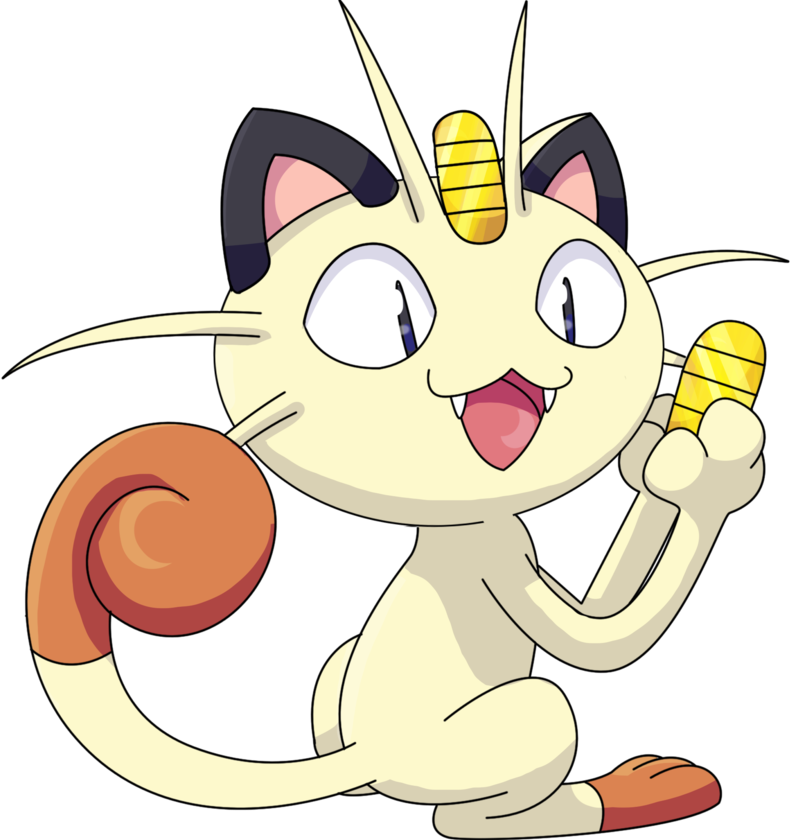
Related Posts
What To Read Next
Are New Pokemon Cards Worth Anything?
If you’ve ever watched a video of someone opening vintage Pokemon cards you probably see prices in the tens of thousands of dollars popping up all over the screen and it can make the value of more recent Pokemon cards look pretty measly.
The 5 Best Sleeves for Pokemon Cards
To some, they may just be colourful cardboard, but for you, Pokemon cards are collectables. And when you’re collecting something, you want to ensure they’re safe and protected to preserve their condition. You can’t start that process with cards unless you use card sleeves.
The 10 Most Valuable Base Set Pokemon Cards
Pokemon card collecting has exploded these past few years. From multimillion-dollar card sales to your average couple-of-hundred dollar price tags, the Pokemon card craze has everyone crawling through their attics to dig out their childhood collection.

